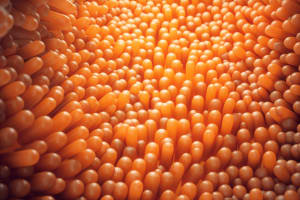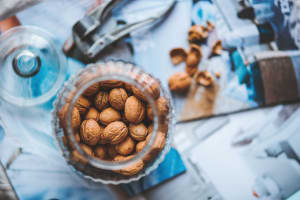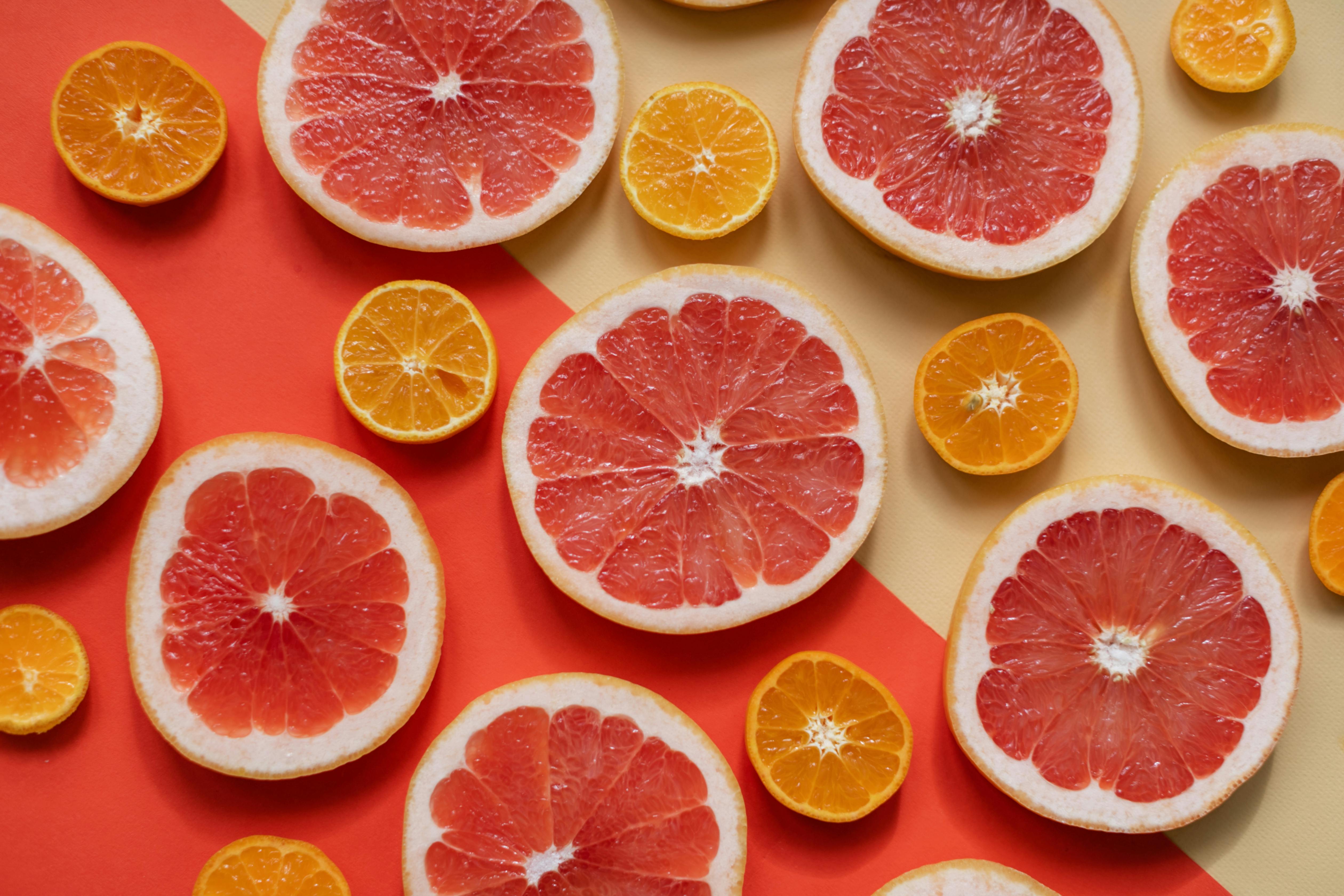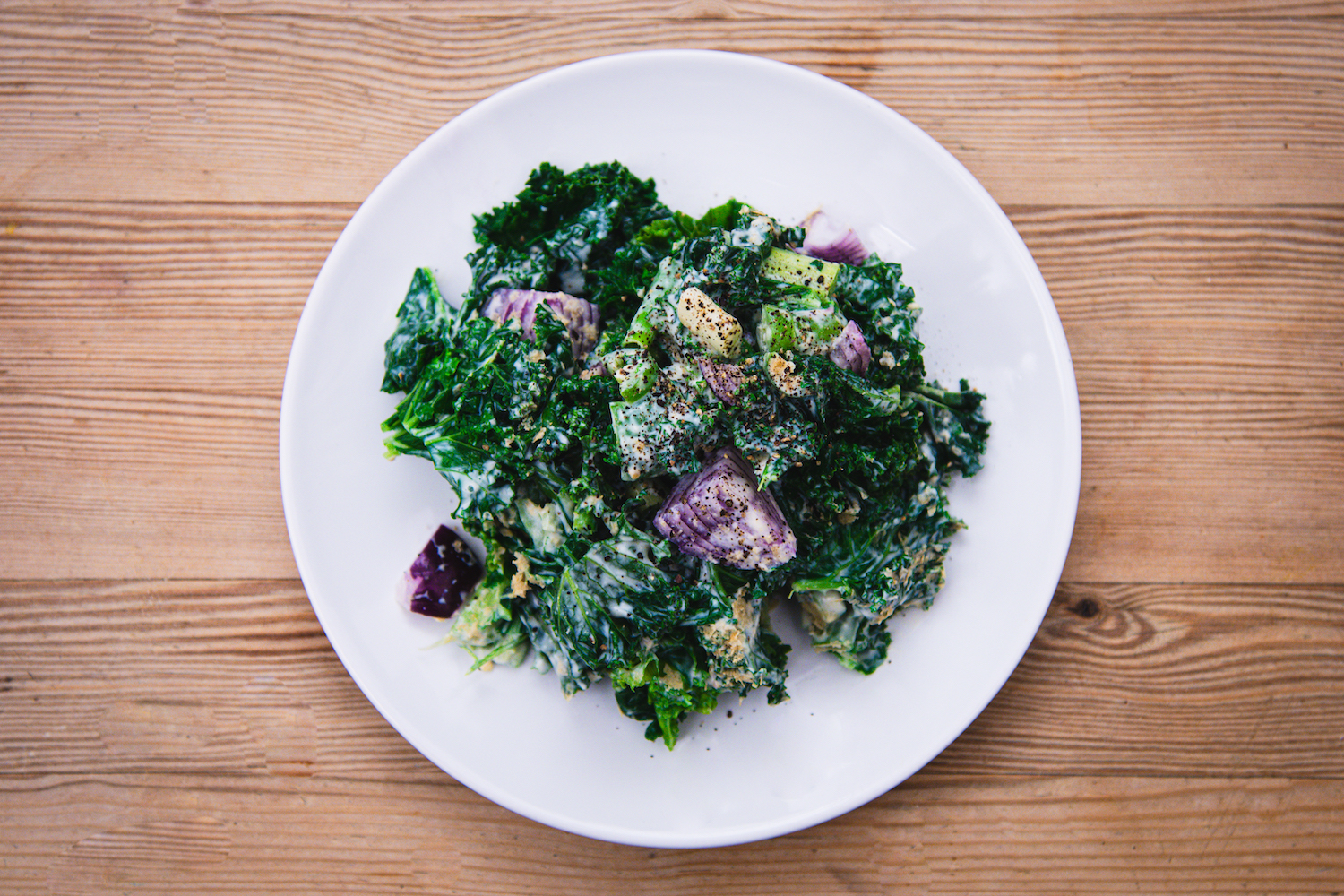Known to protect your gut lining, support your overall microbiome health and even help fight against obesity, diabetes and IBD, Akkermansia muciniphila has become quite the microbial superstar. No wonder it’s being called a “next-generation beneficial microbe!” Here, we delve into recent research that shows just how powerful this bacterium is for our gut.
The world of probiotics is ever-growing, and nowadays you can find them in many supermarkets and health stores. You’re probably familiar with the microbes Lactobacillus and Bifidobacteria. These are often present in probiotic supplements and in fermented foods such as kefir, kombucha, etc. Yet, how much do you know about the extraordinary Akkermansia muciniphila? Commercially underplayed, this microbial superstar can boost weight loss, immunity and fight disease. Let’s learn more about its role in our body, and well as what we can do to boost our levels – through food!
What is Akkermansia muciniphila?
First identified in 2004, Akkermansia muciniphila is a species of bacteria that assists in the maintenance of our gut lining and has many health benefits. It inhabits the mucus layer of the large intestine. As the name suggests, muciniphila (to love mucin, in latin), uses mucin present in the intestinal mucus, as its sole source of carbon, nitrogen and energy. 1,2
Furthermore, this microbe is more abundant in healthy individuals, which has led to it being considered a marker of a happy gut. Indeed, it has very recently been cited as a “next-generation microbe”.1
Why is it so special and how does it work?
Our intestinal lining consists of epithelial cells covered in a mucus layer. Its main role is to allow beneficial substances to enter the body and to stop microbes, toxins and undigested food from getting in and possibly making you sick. This mucus layer, rich in mucin, creates a protective coating.3
Here’s why this microbial species is so beneficial for you:
It Boosts Immunity and Reduces Inflammation
High gut permeability is strongly associated with leaky gut, IBD and obesity.
Surprisingly, when this bacterium “eats” the mucin of the gut wall, it actually encourages the surrounding cells to produce more mucus. So what is really happening? The intestinal lining thickens.4 As a consequence, the intestinal permeability is decreased. Therefore, less unwanted substances and microbes leak into your body. The result is decreased inflammation and overall increased intestinal immunity.
It’s Self-Sufficient & Symbiotic
Contrary to many other microbes in your gut, A. muciniphila doesn’t depend on you to feed it. Instead, it thrives on mucin – even if there are no available nutrients in the gut! In this way, A. muciniphila has a symbiotic relationship with you: by feeding on your mucin, it benefits you with a strengthened gut barrier.
This is also the case with other microbes in your gut. When Akkermansia breaks down mucins, it turns them into short-chain fatty acids (SCFAs), including acetate, which your gut lining cells love 5,6. Acetate is used by other beneficial bacteria like Faecalibacterium prausnitzii, to make butyrate, which is an essential energy source for the cells lining your gut. This kind of process is called cross-feeding5.
Can Be Used to Combat Obesity, Type 2 Diabetes and IBD
So far in humans, studies provided evidence that A. muciniphila is less abundant in individuals suffering from obesity, diabetes and hypertension. Something that is the opposite case with lean individuals7.
Notably, a study conducted on humans in 2019, evaluated the impacts of supplementation with A. muciniphila for 3 months7. The supplementation was well tolerated, and the gut microbiome remained unaffected. Supplemented individuals had: reduced levels of biomarkers for liver dysfunction and inflammation, as well as improved insulin sensitivity and reduced plasma cholesterol levels.
A. muciniphila is also less abundant in patients with Inflammatory Bowel Disease (IBD) compared with healthy people. This indicates that the ability of A. Muciniphila to regulate the intestinal mucosa might play a major role against intestinal damage, which is observed in IBD8.
A. muciniphila is more abundant in lean people, whilst levels are lower in those who have diabetes, IBD, hypertension or are obese.
In conclusion, the abundance of A. muciniphila is reduced in individuals with IBD, as well as other metabolic diseases like obesity and type II diabetes. Although the precise mechanisms through which this bacterium is involved are not fully understood, its effects on microbiome diversity and regulation of the mucous thickness are key. Consequently, it may have a role to play in disease prevention and treatment.
How can you raise your levels of Akkermansia muciniphila?
If you are one of the millions of individuals with A. muciniphila below ideal levels, you are probably wondering if there is anything you can do to increase the colonization of this anti-inflammatory bacteria in your gut. Oral supplementation of this bacterium is still being investigated for its safety and so far is not commercially available.
Specifically, include these foods in your day: cranberries, grapes, black tea and walnuts.
Indeed, a better option is to boost your levels through your diet. Specifically, include these foods in your day: cranberries, grapes, black tea and walnuts.
Polyphenols
Polyphenols are colourful compounds found in all varieties of fruits and vegetables. These are powerful antioxidants and possess anti-inflammatory properties that can help to prevent many illnesses. Furthermore, they also increase the abundance of A. muciniphila in your gut. 9.
Both cranberries and grapes are very rich in proanthocyanidins, a class of polyphenol that stimulates the production of mucin (which Akkermansia loves!)10. Additionally, cranberry extract has been shown to help prevent weight gain in mice as well as reducing intestinal inflammation.9.
Nuts, especially walnuts, have shown to have high contents of anti-oxidant polyphenols 11. Moreover, they make delicious snacks packed with lots of energy. However, remember to consume them in moderation, since they’re still high in (healthy) fats and can take longer to digest – there’s a reason walnuts come in a shell, so skip the nut butters and go for a handful of whole nuts.
Fructo-oligosaccharides
Multiple studies performed on animals report an increase of A. muciniphila levels upon oral supplementation of fructooligosaccharides (FOS). This is a well-known class of prebiotic that is also known for increasing the abundance of Bifidobacterium.12. FOS are naturally present in banana, garlic, asparagus, onions, and can be found in artificial sweeteners.
Due to their molecular structure, these compounds resist hydrolysis by digestive enzymes, and can successfully reach the large intestine, as dietary fiber. These, in turn, serve as an energy source for intestinal bacteria, which produce the good old short-chain fatty acids12.
Nevertheless, it’s worth noting that FOS are present in the well-known FODMAP diet, seen as problematic for combating symptoms of Irritable Bowel Syndrome (IBS). This is due to its poor digestibility, which can lead to symptoms of bloating, flatulence and abdominal discomfort. Thus, although they can increase levels of A. municinipila, fructooligosaccharides are not for everyone.
Closing Remarks
Microbial diversity is a prime target for our gut health. The best way to achieve this is by having a balanced diet and eating food that makes your gut happy, which makes you feel good in return. A. muciniphila is associated with healthy lean individuals and present in low quantities in individuals suffering from IBD, type 2 diabetes and obesity. Unlike other microbes, it thrives on mucins present in the mucous layer of your gut lining. When it breaks down mucin, it produces SCFA’s which can be used by surrounding bacteria. It also strengthens your gut mucous layer and increases intestinal immunity. A. muciniphila is a recent discovery and yet more studies on humans need to be done to unfold all of its full potential.





